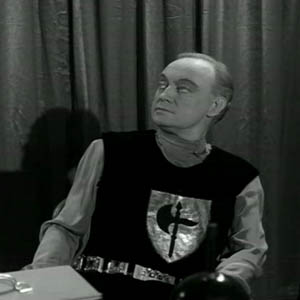As you probably know an ancient Middle East people, the Sumerians famously built huge temple platforms called ziggurats—towers with stairs at the sides and a shrine on top. For example this is a reconstruction image of the Ziggurat of Ur (modern-day Iraq):

Concerning ziggurats I found a fascinating little idea recently. It was stated by the late Dr. David Neiman, rabbi, archeologist and scholar, although I think it did not originate with him.
By the way: If you can spare the time, watch some of his lectures at Youtube. Despite the fact that I feel that his love of antiquity made him cast an unrealistically positive light on several things (slavery in antiquity, to name one), so this has to be taken with a grain of salt, there is a host of interesting material there.
The theory he put forward was this: He claimed that the ancestors of the Sumerians had migrated to Sumer from a mountainous region. This could be inferred from the fact that the early cuneiform symbol for “land” showed a picture of three mountains. It seems these people were used to worship their gods on mountain tops, and built their shrines and temples there.
When they later came to Sumer, which is a very flat country, it felt wrong to them to build temples on the ground. So they simply created artificial mountains and placed the temples on top of them—ziggurats.
The other one concerns the number 0. It is well known that the ancient European peoples generally had no sign for 0 in their number systems. The Greeks and Romans basically had nothing like it—they did not think it was a number at all, so why find a symbol for it? The Babylonians used a positional system to write numbers (as we do), so they had to have some kind of zero to discern, for example, 12, 120 and 102. They did so, but it was not allowed to stand alone, as pure 0. Neither did the Egyptians have it.
The first people to really understand the concept of zero, to write it and use it in calculations were Indians, and so it got into our number system, which is Indian in origin. This is all common knowledge.
Once I read in a book on the history of mathematics that the Indians were the only ones (or the first ones, anyway) to come up with a theory of zero for a special reason: The concept of nothingness (śūnyatā in Sanskrit) has been a very important idea in Indian philosophy since the earliest times. On the other hand Greek philosophers like Parmenides argued that “nothing” could not exist. They could not get their mind around the idea. The Indians did not have this trouble. They were used to 0.
I find these ideas very neat. In fact I have the strange feeling they fit together somehow. Let me try to clarify my point …
These things do not make you want to wear a tin foil helmet. They do not make you hate your neighbor. They do not make you feel you have been lied to your whole life.
Still, they are interesting. They are a little bit outside the canon of common knowledge. Outside the mainstream. You won’t find this information on Wikipedia. It’s one of the things they did not tell us. They are a little bit dubious. They might be true or they might not be, but is nice to belive they are. They do not rock your world like a flying saucer on the White House lawn but they might make you smile (or me at least). They might make you feel, in a tiny way, that the earth is a fascinating place if you lift the curtain. I will always have a place in my heart for things like these.
[I have started to make things like these into a series of articles. Here is the second one. Or just click the search key “little things”!]




